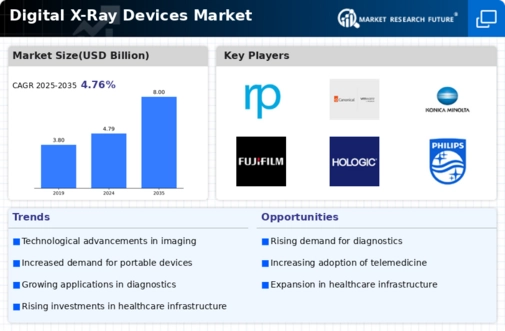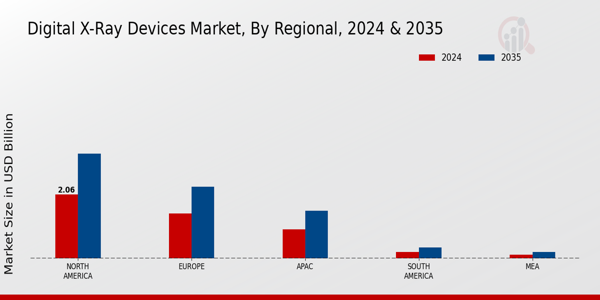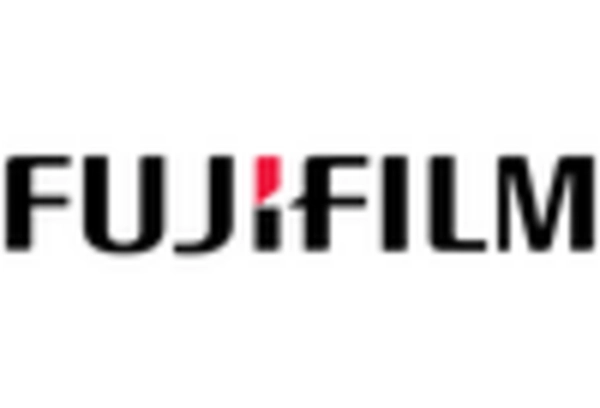Growing Geriatric Population
The aging population is a critical factor influencing the Digital X-Ray Devices Market. As individuals age, they often require more frequent medical evaluations, including imaging studies. The United Nations projects that the number of people aged 65 and older will double by 2050, leading to an increased demand for diagnostic imaging services. This demographic shift necessitates the adoption of efficient and effective imaging technologies, such as digital X-ray devices, to cater to the healthcare needs of older adults. Healthcare providers are likely to invest in these technologies to ensure timely diagnosis and treatment, thereby driving the growth of the Digital X-Ray Devices Market. The intersection of an aging population and advanced imaging solutions presents a unique opportunity for market expansion.
Increased Focus on Patient Safety
Patient safety has become a paramount concern in healthcare, driving the Digital X-Ray Devices Market towards innovations that minimize radiation exposure. Regulatory bodies are emphasizing the need for safer imaging practices, leading to the development of low-dose X-ray technologies. These advancements not only enhance patient safety but also improve the overall quality of care. As healthcare facilities adopt these technologies, they are likely to see a reduction in adverse effects associated with traditional X-ray procedures. The market is responding to this demand, with manufacturers focusing on creating devices that comply with safety regulations while maintaining diagnostic efficacy. This shift towards safer imaging solutions is expected to propel the growth of the Digital X-Ray Devices Market.
Rising Incidence of Chronic Diseases
The prevalence of chronic diseases is a significant driver for the Digital X-Ray Devices Market. Conditions such as cardiovascular diseases, cancer, and respiratory disorders necessitate regular imaging for effective monitoring and treatment. The World Health Organization has reported a steady increase in the incidence of these diseases, which in turn fuels the demand for advanced diagnostic tools. As healthcare providers strive to offer timely and accurate diagnoses, the reliance on digital X-ray devices is expected to rise. This trend indicates a growing market potential, as healthcare facilities invest in modern imaging technologies to cater to the increasing patient load. The Digital X-Ray Devices Market is thus positioned to benefit from this rising demand for chronic disease management.
Technological Advancements in Imaging
The Digital X-Ray Devices Market is experiencing rapid technological advancements that enhance imaging quality and efficiency. Innovations such as digital detectors and advanced image processing algorithms are improving diagnostic accuracy. The integration of artificial intelligence in image analysis is also gaining traction, potentially reducing the time required for diagnosis. According to recent data, the market for digital X-ray devices is projected to grow at a compound annual growth rate of approximately 6.5% over the next few years. This growth is driven by the increasing adoption of digital imaging technologies in hospitals and clinics, which are seeking to improve patient outcomes and streamline workflows. As technology continues to evolve, the Digital X-Ray Devices Market is likely to witness further enhancements that could redefine diagnostic imaging.
Expansion of Healthcare Infrastructure
The expansion of healthcare infrastructure is a vital driver for the Digital X-Ray Devices Market. As countries invest in improving their healthcare systems, there is a corresponding increase in the establishment of hospitals and diagnostic centers. This expansion is particularly evident in emerging economies, where the demand for advanced medical technologies is on the rise. The establishment of new healthcare facilities often includes the procurement of modern imaging equipment, including digital X-ray devices. This trend is expected to continue, as governments and private entities recognize the importance of accessible healthcare services. Consequently, the Digital X-Ray Devices Market stands to benefit from this infrastructural growth, as more facilities seek to enhance their diagnostic capabilities.


















Leave a Comment